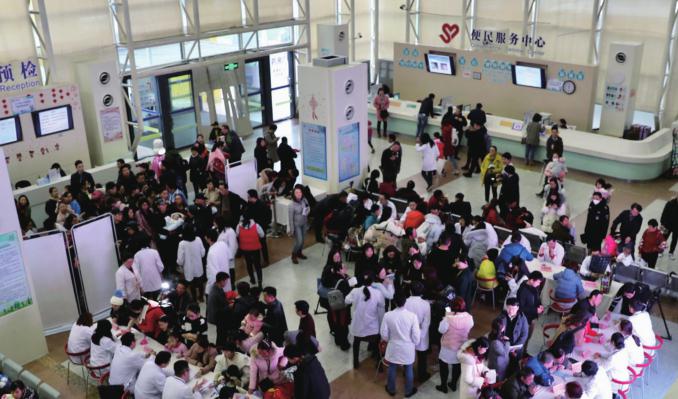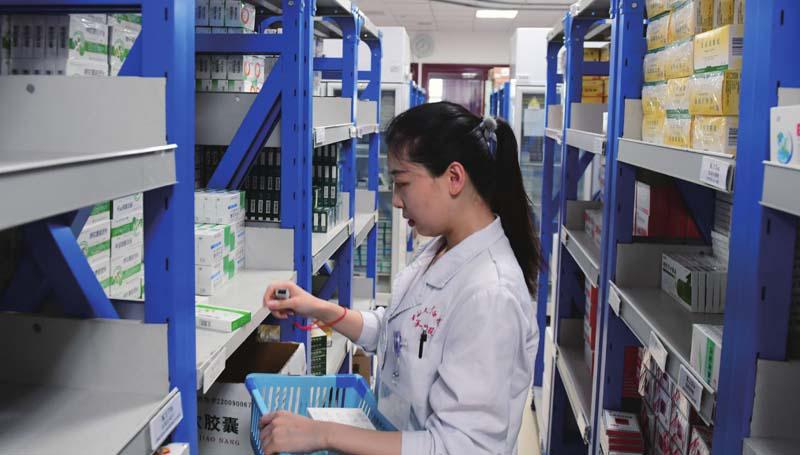RARE FINDS
2019-03-27ByYuanYuan
By Yuan Yuan

Leading up to Rare Disease Day on February 28, Wang Yiou was busy preparing for various activities for a special event. The 37-year-old with brittle bone disease has been trying to raise awareness about rare diseases in China since 2008, when she founded an association in Beijing to support and care for such patients.
This is the 12th year Wang has participated in the days activities. “I am glad to see more people paying attention to these patients,” she said. “This year, we are very happy to see that the government has released more policies on the treatment of rare diseases.”
On February 11, at an executive meeting of the State Council presided over by Premier Li Keqiang, a decision was announced to provide a preferential valueadded tax (VAT) rate for some specific medicines to treat rare diseases. In all, 21 foreign and domestic medicines and four active pharmaceutical ingredients began to receive a preferential VAT rate of 3 percent on March 1.
Save money, save lives
“This is a very positive sign from the Central Government,” Wang told Beijing Review, adding that currently there are over 7,000 rare diseases in the world, while only about 400 can be treated with drugs.
Due to the limited number of patients and big challenges in developing drugs for these diseases, pharmaceutical companiesenthusiasm for spending time and money in this field is not very high, resulting in the exorbitant prices for treatments.
“This means that among the over 20 million patients with rare diseases in China, only a very small fraction can get drugs,”Wang said. “They are the lucky ones.”
However, for Qiqi and his family, this “luck” comes at a huge cost. Qiqi, a 10-year-old resident from Quzhou City, Zhejiang Province, was diagnosed with Gauchers disease, a genetic disorder that enlarges the liver and spleen, at 2 years old. The disease is quite rare in China and so far the number of patients is below 400.
A special drug, Cerezyme, can help to control the disease, but each dose costs about 23,000 yuan ($3,380) and Qiqi needs three doses a month. Thus, the cost of the drug per year is more than 800,000 yuan($120,000). Furthermore, as Qiqi grows older, he will need more doses and the cost will skyrocket.
This is far from affordable for an average Chinese family. Having struggled for about five years, Qiqis family got relief when Cerezyme was included in the medical insurance system in Zhejiang Province on January 1, 2016. The drug is now on the list of the new VAT reduction policy, which will further relieve their financial burden.
Zhejiang is not the first province to make this change. In 2013, Shanghai took the lead by including Gauchers disease in its medical insurance, covering 85 percent of drug costs. Ningxia Hui Autonomous Region, Kunming in Yunnan Province, Qingdao City in Shandong Province and several other cities in Guangdong Province followed suit.
Chen Wei, a deputy at the 13th National Peoples Congress (NPC) and a doctor from Peoples Hospital in Kecheng District of Quzhou, has been providing medical treatment for rare disease patients for a long time. At the NPC session last year, she called for incentive policies for developing drugs for rare diseases.
“The government should play a leading role in developing preferential policies to encourage more domestic pharmaceutical companies in the research and development of such drugs,” Chen said.
On February 18, after the announcement of the VAT reduction, China declared that it will establish a national collaborative network of hospitals for rare disease diagnosis and treatment to promote the early detection and effective treatment of these diseases, according to a decision by the National Health Commission (NHC).
A total of 324 hospitals were selected to make up the new network based on their capacity and experience in treating these patients. The network will facilitate the timely transfer of difficult and complicated cases among hospitals and the allocation of quality medical resources.
In addition, hospitals in the network are urged to further train medical workers on rare disease knowledge and clinical skills, focusing on improving their abilities to identify, diagnose and treat such cases. China will also establish a registration system for rare disease patients.
The medicine tax cuts are expected to continue and be expanded to cover more medicines and medical devices, which will further reduce the economic burden on patients and their families.
Battling cancer
Helping patients with rare diseases is just one part of the efforts the Chinese Government has made in recent years to relieve medical financial burdens.
In 2018, China included 17 drugs that treat major cancers, such as lung and rectal cancer, in the national basic medical insurance program, according to Chinas National Medical Products Administration(NMPA), Chinas top drug regulator.
With an estimated 3.8 million new cancer cases in China every year, it has become a leading cause of death in the country. In 2015, China launched pilot negotiations with pharmaceutical companies on reducing the prices of cancer drugs and medicines that treat serious diseases.
After three years of negotiations, the prices of most of the drugs have been cut by more than 50 percent. This has greatly relieved patients burden along with the fact that they will spend even less after reimbursement from the medical insurance fund.
For example, the price of Erbitux, a drug for rectal cancer produced by German pharmaceutical company Merck, was reduced by 69 percent, from about 4,200 yuan ($617) a bottle to 1,295 yuan ($190).
The efficiency of approving anti-cancer medicines has been greatly increased as well. “It now takes 12 months on average for a new anti-cancer drug to be approved by the NMPA, down from 24 months before 2018,” Wang Ping, chief of the division of medicine registration under the NMPA said at a press conference on February 19.
She said that in 2018 it approved 18 new cancer medicines, up 157 percent from 2017. Meanwhile, the government exempted imported medicines from quarantine at border ports so they could reach hospitals and pharmacies quickly.
In addition, the approval process for allowing imported medicines into the Chinese market and the procedure for domestic pharmaceutical firms to conduct clinical tests were both simplified.
This year, Wang Ping said the NMPA will work with the NHC to develop the second list of much needed imported drugs that are qualified for fast-track review. The NMPA will also try to speed up the review process for imported and domestic cancer medicines and tighten up the monitoring of adverse reactions.
“The country has tried to develop a favorable policy environment for innovation in medicines so that the latest medical research findings can benefit Chinese patients as soon as possible,” Wang Ping said.
